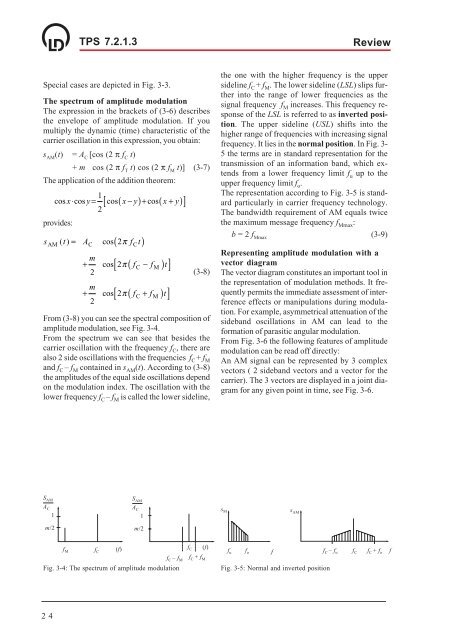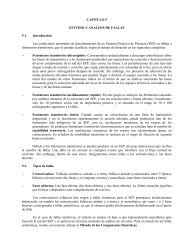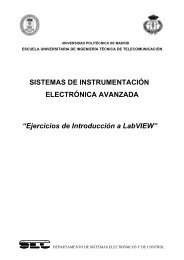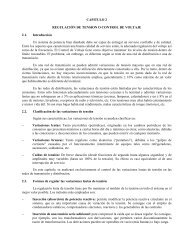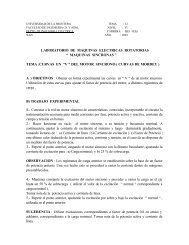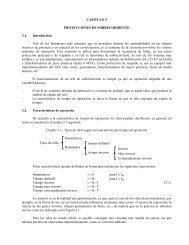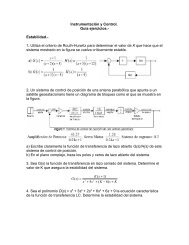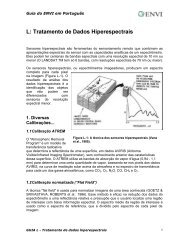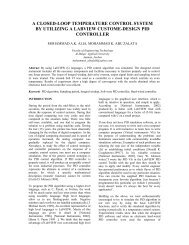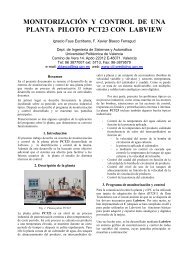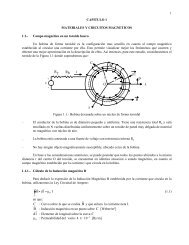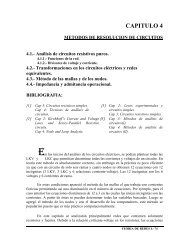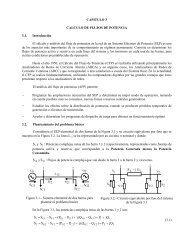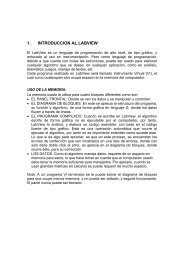T 7.2.1.3 Amplitude Modulation
T 7.2.1.3 Amplitude Modulation
T 7.2.1.3 Amplitude Modulation
Create successful ePaper yourself
Turn your PDF publications into a flip-book with our unique Google optimized e-Paper software.
TPS <strong>7.2.1.3</strong><br />
Review<br />
Special cases are depicted in Fig. 3-3.<br />
The spectrum of amplitude modulation<br />
The expression in the brackets of (3-6) describes<br />
the envelope of amplitude modulation. If you<br />
multiply the dynamic (time) characteristic of the<br />
carrier oscillation in this expression, you obtain:<br />
s AM<br />
(t) = A C<br />
[cos (2 π f C<br />
t)<br />
+ m cos (2 π f T<br />
t) cos (2 π f M<br />
t)] (3-7)<br />
The application of the addition theorem:<br />
1<br />
cos x⋅ cos y= cos( x−y)+ cos x+<br />
y<br />
2<br />
provides:<br />
s ( t) A cos 2π<br />
f t<br />
AM C C<br />
[ ( )]<br />
= ( )<br />
m<br />
+ cos 2π<br />
( fC<br />
− fM<br />
) t<br />
2<br />
[ ]<br />
m<br />
+ cos 2π<br />
( fC<br />
+ fM<br />
) t<br />
2<br />
[ ]<br />
(3-8)<br />
From (3-8) you can see the spectral composition of<br />
amplitude modulation, see Fig. 3-4.<br />
From the spectrum we can see that besides the<br />
carrier oscillation with the frequency f C , there are<br />
also 2 side oscillations with the frequencies f C + f M<br />
and f C – f M contained in s AM (t). According to (3-8)<br />
the amplitudes of the equal side oscillations depend<br />
on the modulation index. The oscillation with the<br />
lower frequency f C – f M is called the lower sideline,<br />
the one with the higher frequency is the upper<br />
sideline f C + f M . The lower sideline (LSL) slips further<br />
into the range of lower frequencies as the<br />
signal frequency f M increases. This frequency response<br />
of the LSL is referred to as inverted position.<br />
The upper sideline (USL) shifts into the<br />
higher range of frequencies with increasing signal<br />
frequency. It lies in the normal position. In Fig. 3-<br />
5 the terms are in standard representation for the<br />
transmission of an information band, which extends<br />
from a lower frequency limit f u up to the<br />
upper frequency limit f o .<br />
The representation according to Fig. 3-5 is standard<br />
particularly in carrier frequency technology.<br />
The bandwidth requirement of AM equals twice<br />
the maximum message frequency f Mmax :<br />
b = 2 f Mmax<br />
(3-9)<br />
Representing amplitude modulation with a<br />
vector diagram<br />
The vector diagram constitutes an important tool in<br />
the representation of modulation methods. It frequently<br />
permits the immediate assessment of interference<br />
effects or manipulations during modulation.<br />
For example, asymmetrical attenuation of the<br />
sideband oscillations in AM can lead to the<br />
formation of parasitic angular modulation.<br />
From Fig. 3-6 the following features of amplitude<br />
modulation can be read off directly:<br />
An AM signal can be represented by 3 complex<br />
vectors ( 2 sideband vectors and a vector for the<br />
carrier). The 3 vectors are displayed in a joint diagram<br />
for any given point in time, see Fig. 3-6.<br />
S AM<br />
S AM<br />
A C<br />
m/2<br />
A C<br />
m/2<br />
f M f C<br />
(f)<br />
f C – f M<br />
Fig. 3-4: The spectrum of amplitude modulation<br />
s M<br />
f u f o<br />
s AM<br />
f C – f o f C f C + f o<br />
1<br />
1<br />
f C<br />
f C + f M<br />
(f)<br />
f<br />
Fig. 3-5: Normal and inverted position<br />
f<br />
24


